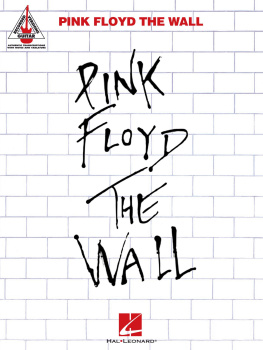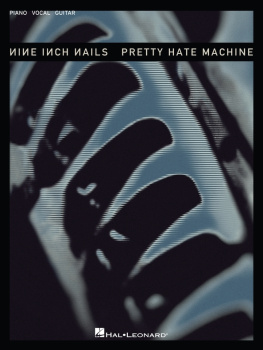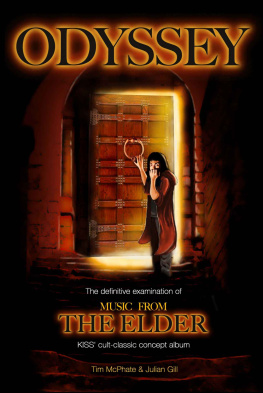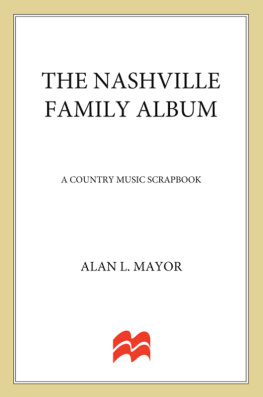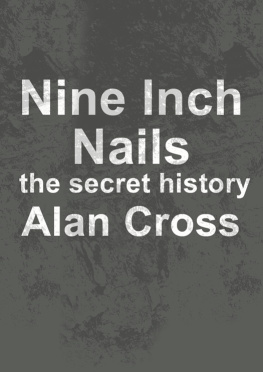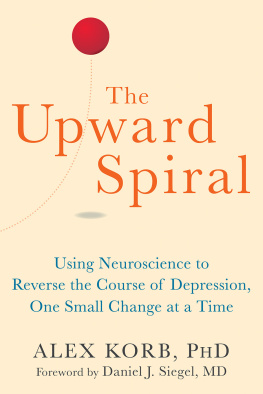Nine Inch Nails [NIN]
Pretty Hate Machine [PHM]
The Downward Spiral [Spiral]
Note: I have followed Daphne Carrs lead by using the plural possessive formNine Inch Nailswithout the extra s.
E die, Maja, and Gonzo! [xXx], Mum & Dad, Grandma Lynne [Hon.], Miriam Weber [Reader and Scholar], Shaughan Dolan [A Jack of Gentlemen], Brian Harley [Tea and Sympathy], Kertu Hiet, Mark Brend, Tom Seabrook, Ryan Diduck, Shannon OShea, Society of Authors [Contingency Grant], and Everyone at Rowman & Littlefield / Backbeat Books.
INTERVIEWS AND RESEARCH: Sean Beavan [Zeitgeist Insight], Adrian Belew [Guitar Wonder], Jared A. Carnie [Poet], Daphne Carr [the Rust Belt], Charlie Clouser [the Horror], James Knight [Poet and Artist], Daniel Lukes [NIN vs. Manics], Grant Piercy, Ann Powers [on Nasty Art], S. Alexander Reed [Industrial Absolute], Greg Rule [Music Tech], Patrick Davidson Roberts [First Spark], Dr. Andrew Tatusko [Grotesque and Sublime].
IMAGES: Rik Goldman, Steinman & Tear, Feans, Mark Benney, Mykal Burns, LAPD archive/Fototeka, Andrew Bardwell, Thanasis Anastasiou, David Finn, Wellcome Collection.
All the NIN Fans.
T he Downward Spiral is Nine Inch Nails most consistent, unified piece of music and remains one of the most artistically and culturally significant albums of the 1990s, with an influence that reaches far into the present day. The album expressed the mood and the atmosphere of its timepolitical, social, and personalbut more importantly it continues to resonate with countless fans and new generations of listeners. Almost in spite of itself, it has become, for many, that rare thingthe album that saved your life.

Released on March 8, 1994, to immediate critical acclaim, Spiral went on to sell over 5 million records in the United States alone. It accomplished this working for and against its fusion of transgressive themes and ideas, such as depression, obsession, addiction, BDSM, violence, atheism, and self-loathingideas that remain shocking today, still court controversy, and are, for some, highly offensive, directly challenging societal norms through freedom of expression and confronting middle America with itself, those harsh truths that many would prefer to ignore.
The Downward Spiral explores the depths of one human beings capacity for pain and suffering in the face of nihilistic self-annihilation, a descent into his own personal hell. This is delivered from the perspective of a narrator persona that both is, and is not, Trent Reznor, and as the albums chief architect, he would struggle to extricate himself from the spiraling narrative that he created and would ultimately follow.
The spiral model establishes the albums theme and form, expressing the nature of progressive decline. The narrator strips away layers of artifice, shedding metaphorical skins and personal relationships as an emotional drain to pursue his own splintered and fractured idea of becoming a more empowered individual, but this pushes the worst aspects of his nature to the fore until he is confronted by the end zone of nihilistic meaninglessness, coming to terms with the seeming inevitability of his own self-destruction.
Control is the overarching theme that dominates the narrative, a conflicted exercise of power over the self and the infinite needs of obsession and addiction. The narrator wrestles with and tries to resist the external forces of organized religion, censorship of transgressive sexuality, and the weaponization of masculinity; this would also become manifest in Reznors professional conflicts with his record labels as he fought for both commercial independence and artistic control.
The albums great strength is to express and make empathetic this very personal struggle, and it becomes a unique record as both an album of music and a scorched-earth artifact brought back, or recovered, from the brink of the abyss. It becomes an experience to witness, a spectacle to look upon, with listeners either forced to turn away or compelled to see the record through to the every end.

Trent Reznors great musical achievement was to bring the computer and the studio to the fore as instruments in their own right in an era when the technical and creative potential of music production software was still emerging. In his liner notes essay to the 2016 LP reissue of The Downward Spiral, the author John Doran suggests that the album was part of the end of music, as it had been previously defined for much of the twentieth century, with Reznor utilizing the amplified noise and selective adaptation of the electric guitar and the sampler, meeting in the middle of the evolutionary musical spectrum. Nine Inch Nails was sonically daring compared to the dominant musical styles of the early 90s, an era caught between pop and grunge hegemony. Spiral was already ahead of the alternative curve; it sounded like the future, and it still does today.
The album is less about electronica, sequencers, and synthesizers, and more about applications of technology to manipulate and subvert our expectations of what music can be. Working closely with his production team of Flood, Alan Moulder, and Sean Beavan, Reznor created ghost-in-the-machine performances, othering sounds to make synthetic music sound organic, and vice versa, for technology to express and make empathetic human experiences of pain and suffering, without crushing the life and soul out of it. The albums power remains intensely physical: guitars shred, stab, slash, and collide; Reznor yells, screams, whispers out his losing breath; drums are beaten and pounded into staticthe literal sound of music breaking down reflects the albums self-possessed expressions of decay. NIN became less a band and more a machine for Trent Reznor to make music within.
Reznor applied the classical piano training of his teenage years and his musical arrangement skills to bend, distort, and break the rules of composition, attacking what had become traditional rock orthodoxy, to create something genuinely original and ground-breaking. The album forced a reevaluation of all genres, creating a space beyond the labels of industrial, metal, and synth pop to produce a record that quickly outstripped these narrow definitions and broadened their horizons. Reznor remained keen to stress some debt to industrial music but argued that he simply brought elements of that sound into the mainstream. For many journalists, industrial was just an easy tag, but for Reznor, aspects of that sound became one of many tools.
The Downward Spiral is a record of extremes, often displaying uncompromising sonic brutality: conjoining ecstasy with misery; energy with apathydemanding to the point of exhaustion. The album was radical in how sharply it shocks and soothes the listener, several times within the same song, speaking the unspeakable through measures of force and restraint, weighing pauses against returning onslaughts, exploiting ambient abstraction of quiet awe and resonant silences to create tension, fear, and dread.

The album was constructed to be listened to as a self-contained whole that Reznor [falsely] claimed had no singles and limited commercial appeal. On first listen, the album can appear monolithic and unapproachable in its density; from its hostile sonic extremes to its challenge of difficult self-knowledge. But as with much difficult art, it requires investment of time and attention and becomes more rewarding through thisa very different beast to the short attention span-grabbing and track-skipping qualities of music today. Reznor spoke about his intent to create a densely layered album that revealed itself to the listener over time. Comparing this approach to the instant appeal of hit singles like Smells Like Teen Spirit, he said to


